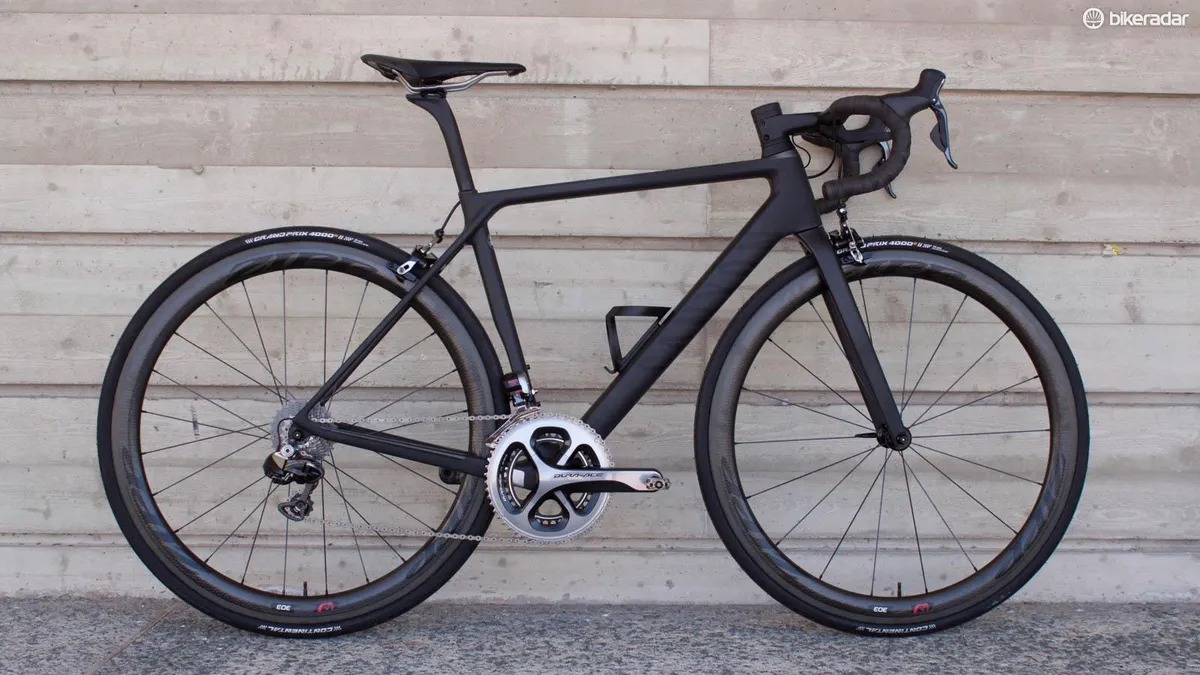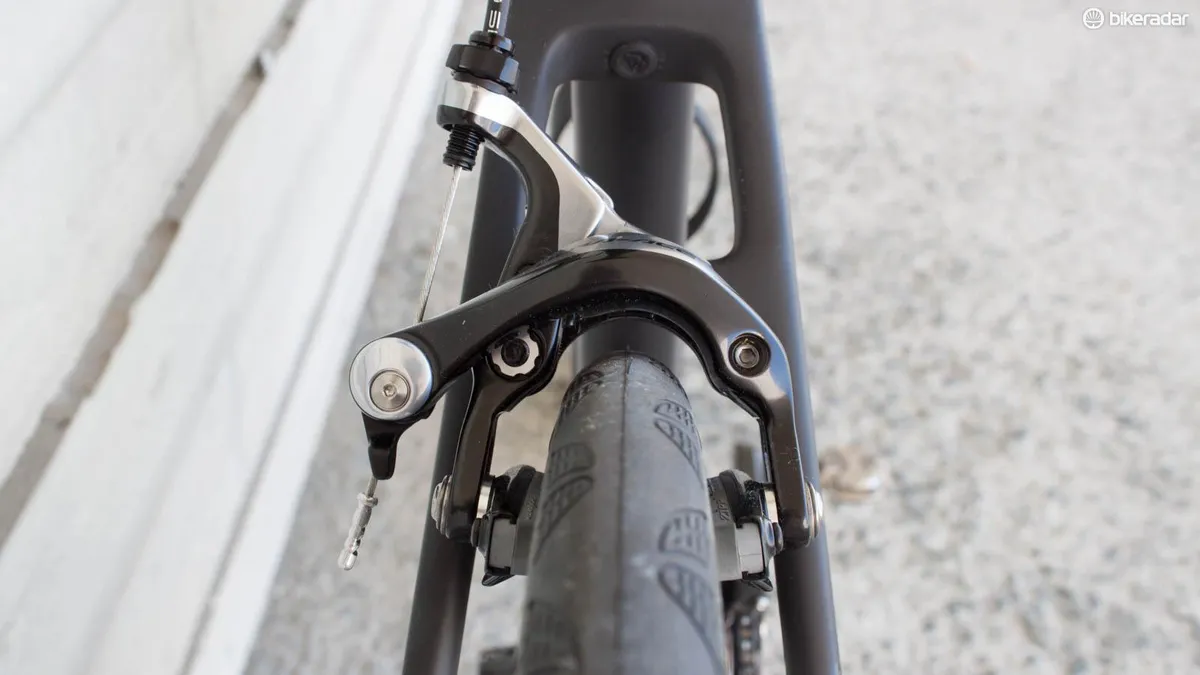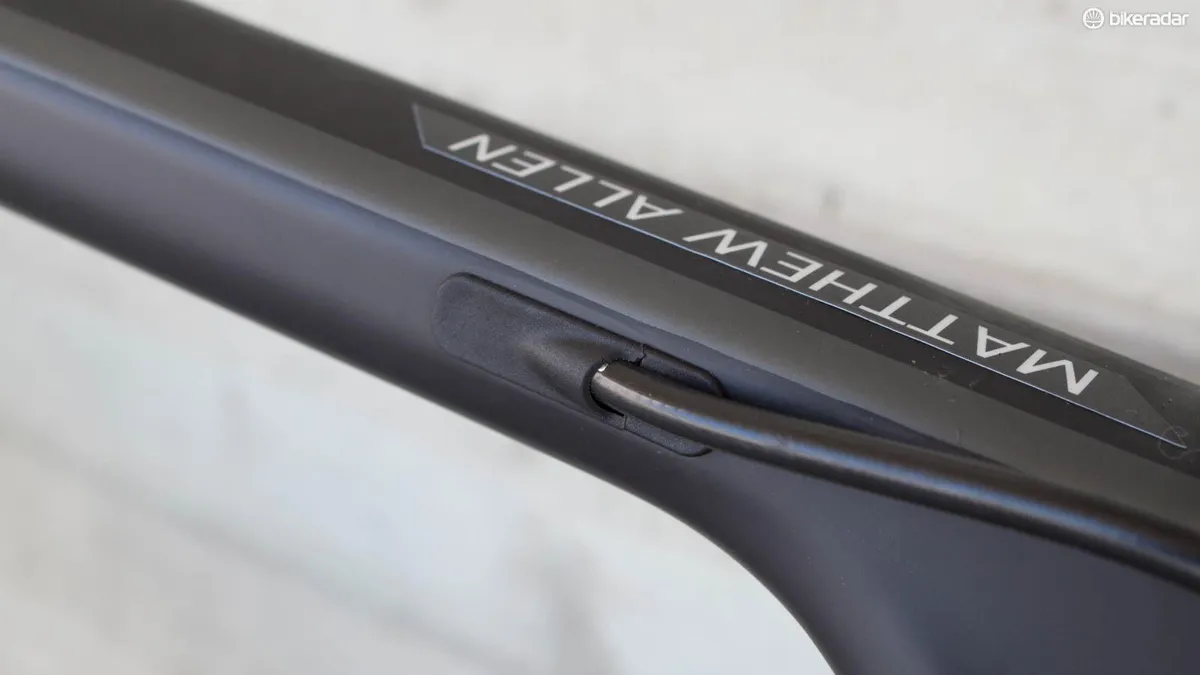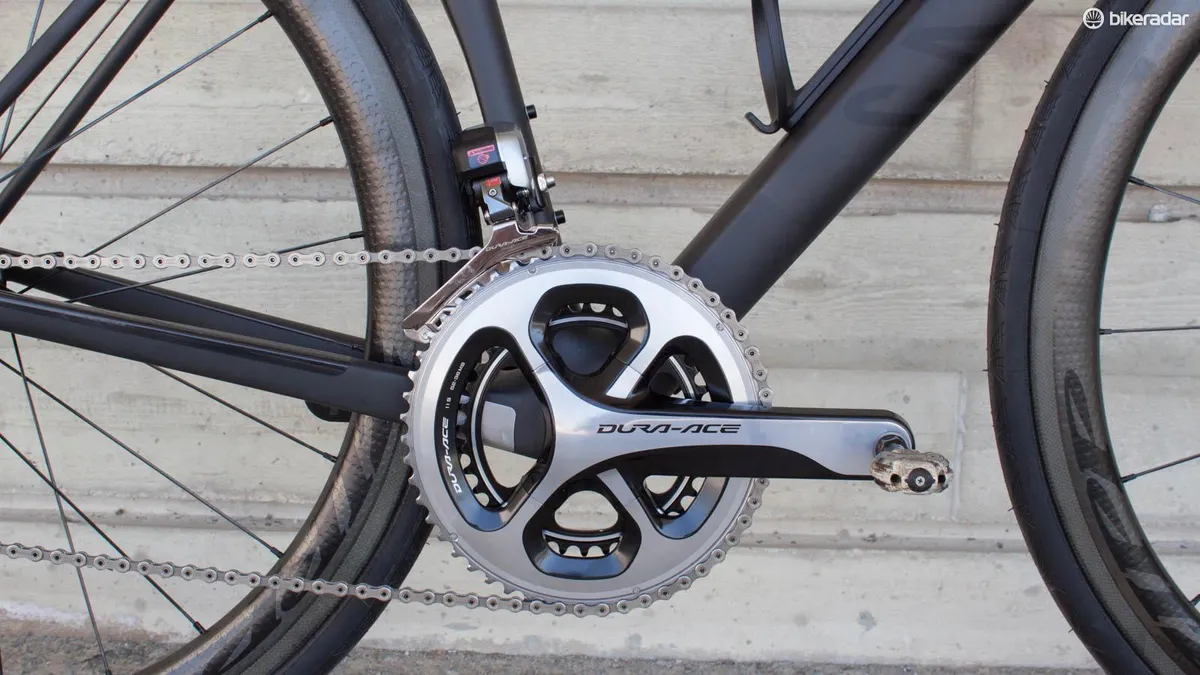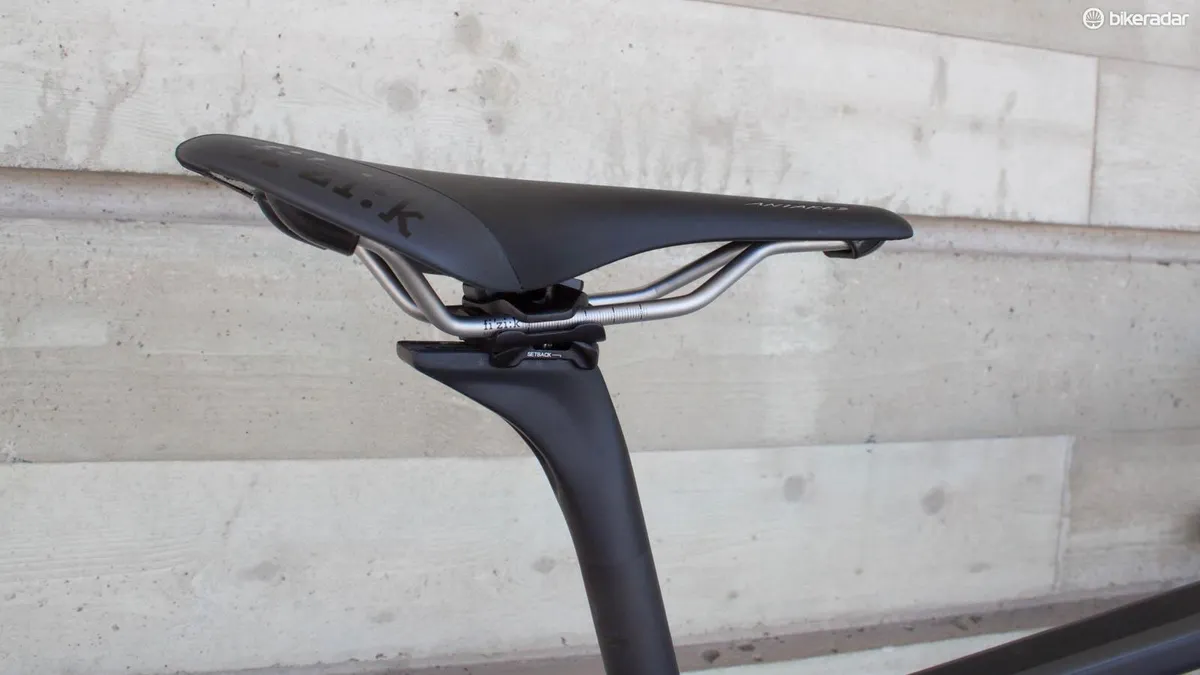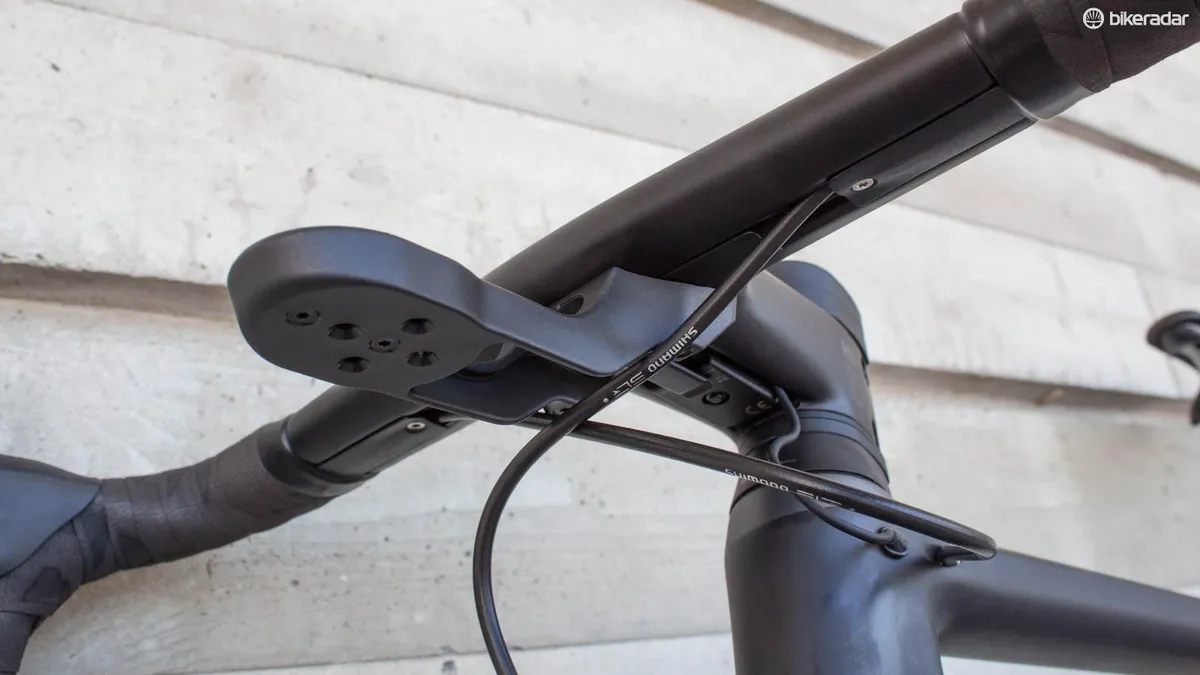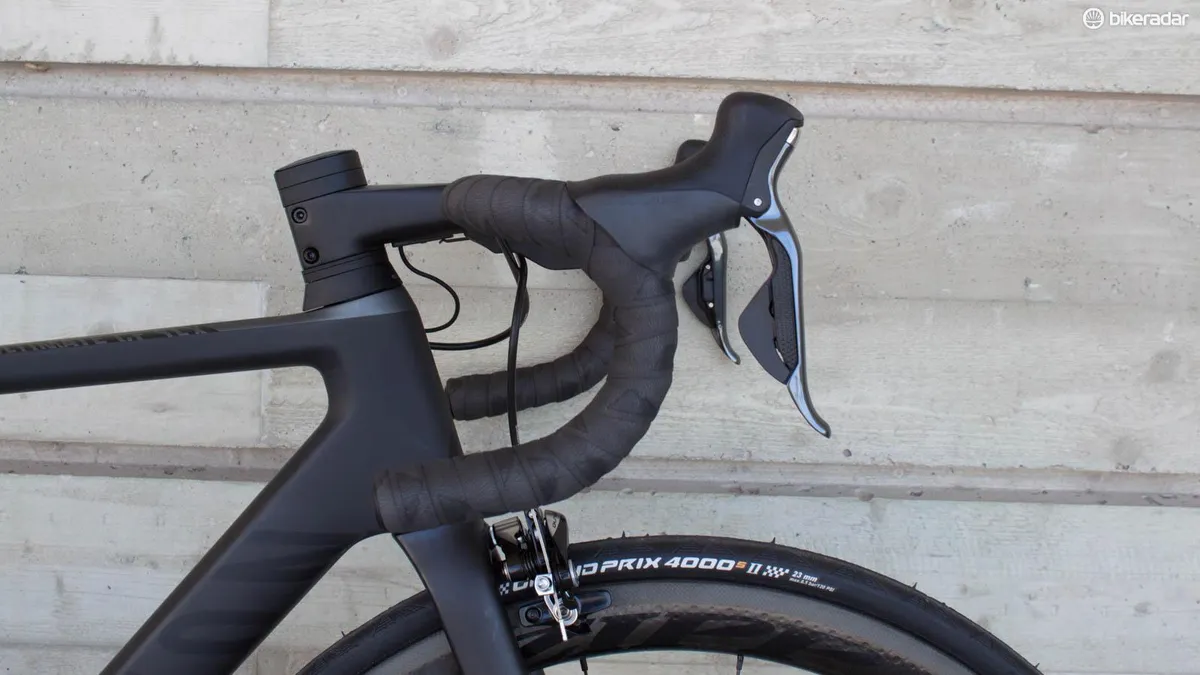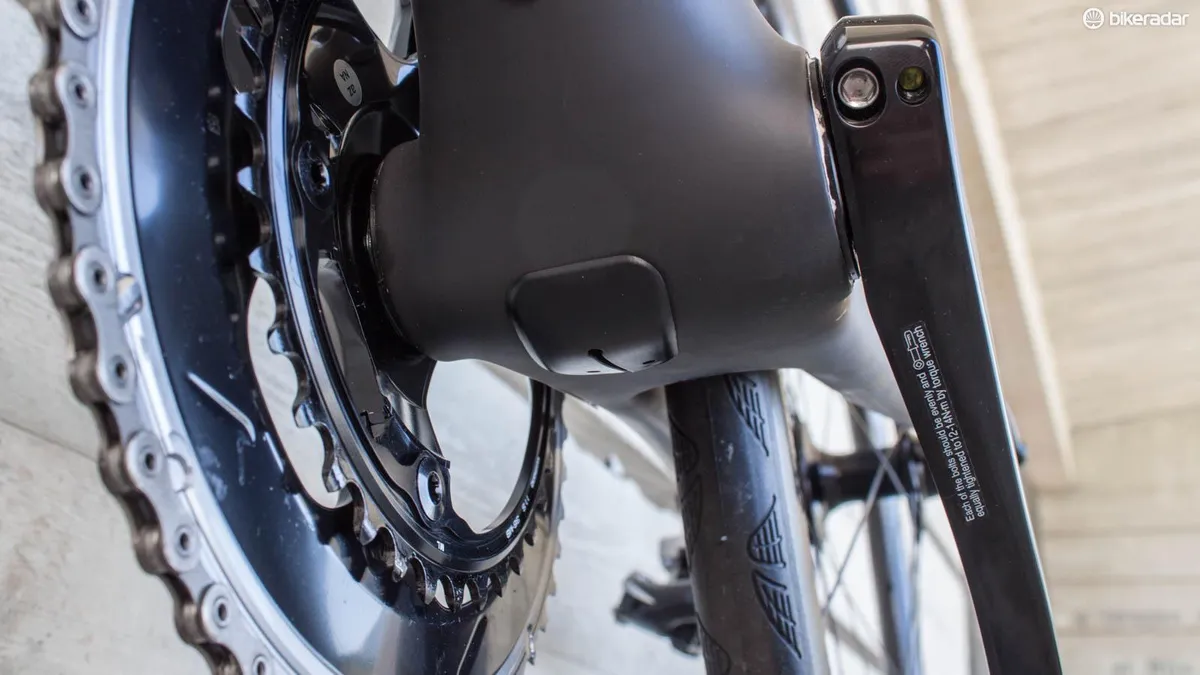We’ve already seen it in the wild, and Canyon has now announced details of its new top-end lightweight bike, the Ultimate CF SLX. BikeRadar got a chance to ride the new machine in Pamplona, Spain – keep reading for a rundown of what’s changed and our initial impressions on the road.
Canyon is the king of direct sales, but success in the pro peloton with teams like Katusha and Movistar means the German manufacturer doesn’t need to make excuses. It may be best known for the absurdly generous build specs it offers for the money, but Canyon isn’t a budget mail-order warehouse. It makes serious kit for serious cyclists, and the new Ultimate CF SLX has a realistic shot at being a Tour de France-winning bike this July between the capable legs of Nairo Quintana.
"Engineered perfection"
The Ultimate has been around since 2005 and this latest release is the fourth generation. Although outwardly similar to the previous iteration, the new Ultimate is an entirely new bike. At the launch, Canyon’s engineers took pains to detail the thinking behind the new design, which they describe as “engineered perfection”.
Hitherto, Canyon’s range has had a clear aero/lightweight split, with the Aeroad in the former category and the Ultimate the latter. Now, while the frameset’s stiffness-to-weight (STW) ratio is still the main concern, considerable effort has been put into improving the Ultimate’s performance in the wind tunnel.
At the same time, Canyon is a big believer in comfort as a factor in performance, so the aim of the Ultimate project was to offer a 10 percent increase in “compliance” (i.e. vertical displacement of the seatpost under load) along with a 10 percent reduction in aerodynamic drag. It was considered essential to hit these targets without compromising on STW, and Canyon says the frame weighs just 780g in a medium, plus 295g for a fork with 210mm of steerer.
That’s not too shabby, although Canyon showed it can do even better, bringing along an ‘Evo’ weight weenie version of the bike with a 665g frame that will apparently retail at €13000 ( £9200) for a complete bike. It’s also worth pointing that if the new frame is lighter but STW remains the same, then stiffness must actually have reduced slightly.
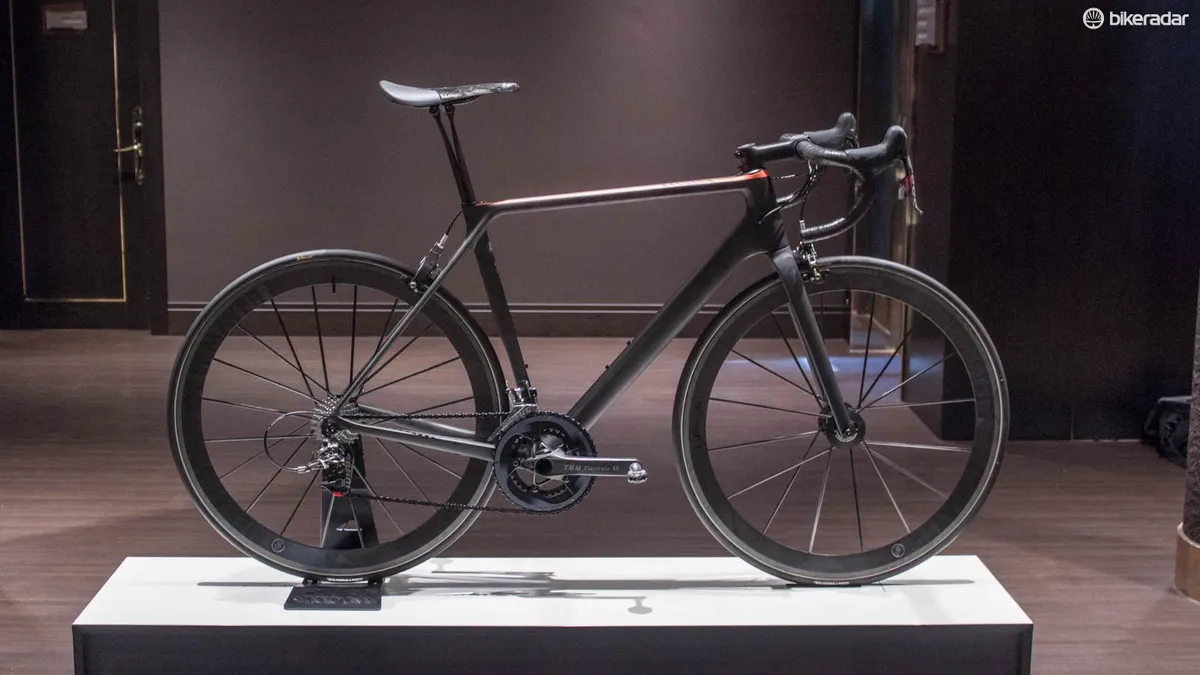
The Ultimate CF Evo is lightest of all – but pricing is stratospheric
Aerodynamics and comfort
The aerodynamic requirement necessitated a complete redesign of the frame’s tube profiles, with the down tube acquiring a slimmed and Kamm-like aerofoil cross-section. The chainstays have narrowed too, but to combat a loss of lateral stiffness, the top tube (which has a lesser effect on total drag) has broadened and the seatstays are wider-set. At the front end, the head tube is hourglass-shaped, and a slick one-piece carbon cockpit Canyon calls the H36 Aerocockpit further reduces drag.
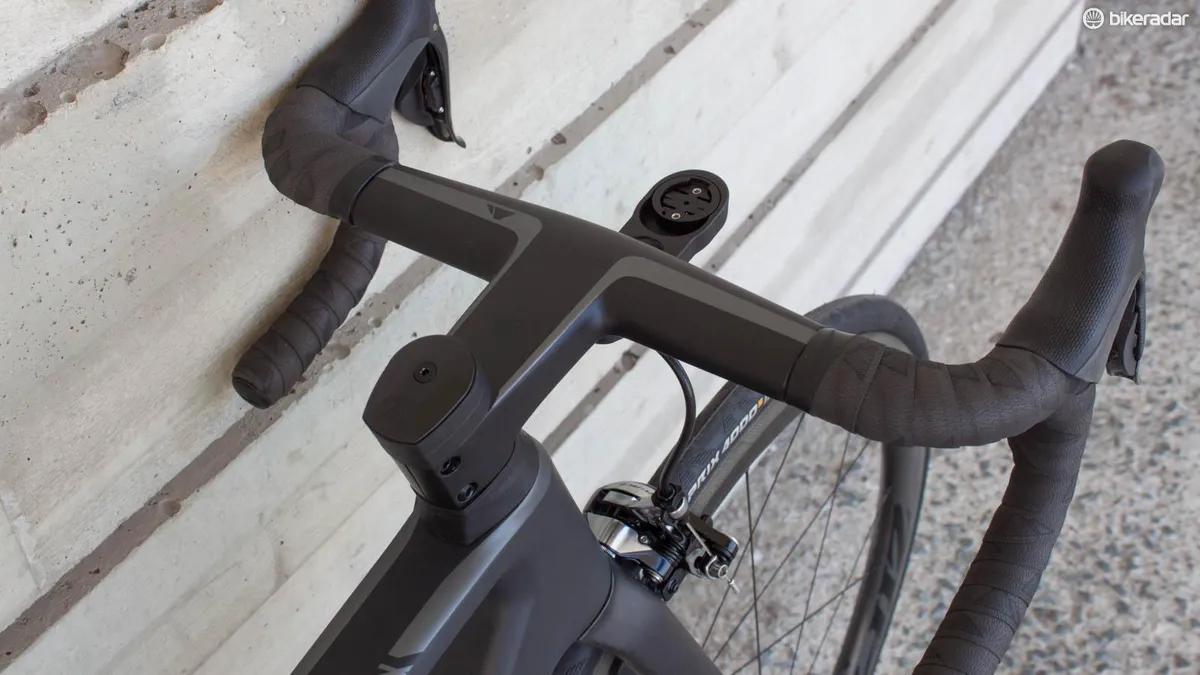
The H36 Aerocockpit is stiff and aero
We have mixed feelings about this last detail; it looks fantastic and includes clever integration for a Di2 junction box and Garmin mount, but at the same time it limits adjustability. Given that most Canyon customers won’t be able to try the bike before buying, having to swap out the entire bar just to alter the stem length might put some people off. In any case, the sum of these refinements is a claimed saving for the frameset of 7.4W at 45km/h (eight percent over the third generation) or 12.9W for the frameset plus Aerocockpit (14 percent).
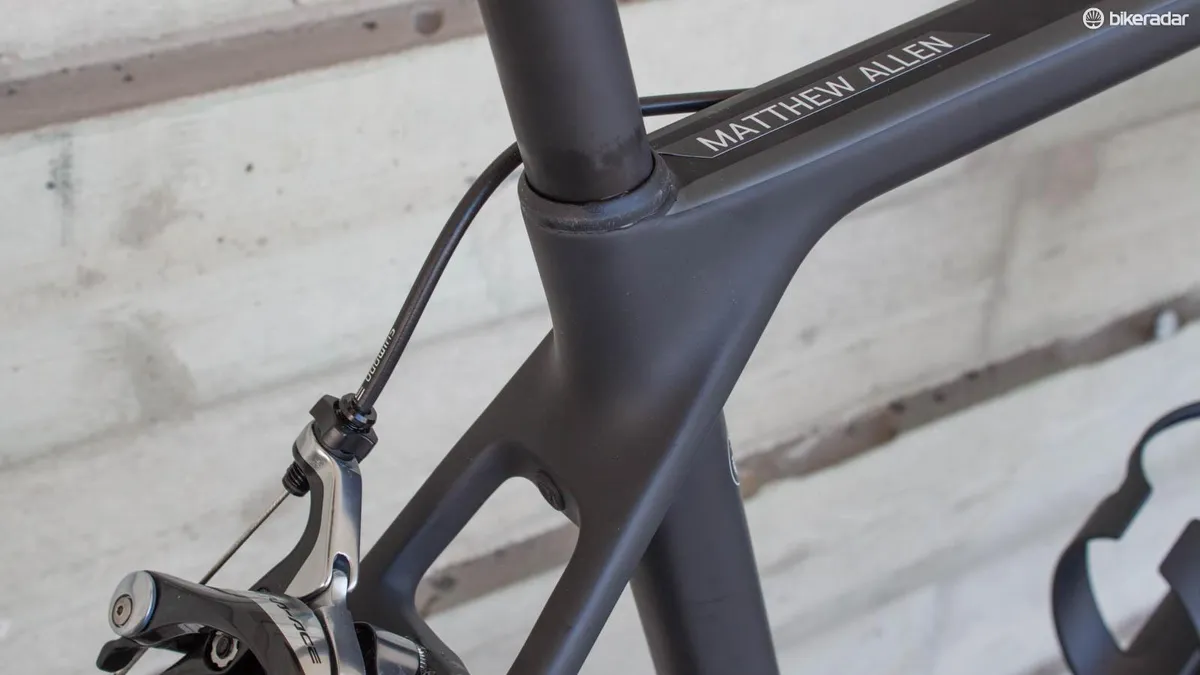
That rubber plug conceals the seatpost clamping bolt, making for very clean lines
Engineer Sebastian Hofer characterises the process of improving comfort as being “about optimising the amount of deflection each of the relevant components are capable of”. With the new Ultimate, the focus was on the seatpost: an ingenious clamping mechanism using a setscrew hidden between the seatstays allows greater deflection of the post. This creates a claimed 15 perent more vertical deflection, which Hofer equates directly with comfort. It also makes for a very tidy seat cluster, the only downside being slightly less convenient access for adjustment.
Canyon’s obsessive attention to detail hasn’t been limited to big picture stuff either. A prime example is the cable stops, all of which have been redesigned to produce the best possible cable routing, and to eliminate movement that would impact shifting and braking. In a similar vein, the rear derailleur hanger has shed half a gram (yes, really), but gained a claimed 25 percent in stiffness for crisper shifting. Have you ever thought about the stiffness of your hanger? You’re thinking about it now.

The rear derailleur hanger is a claimed 25 percent stiffer than before
You might well question how important these improvements are, and we certainly do, especially given that on the aerodynamic front, the rider is responsible for the majority of the drag. All the same, free speed is free speed, and we’ll take our marginal gains quite happily.
Along with chasing every metric of frame quality under the sun, Canyon has shaken up the sizing too. Once offered in sizes XS-3XL, the new Ultimate comes in 2XS to 2XL – good news for shorter riders, perhaps less so for the exceptionally tall. The geometries have also been tweaked to give them a more even spread, with the idea that no rider should now fall between sizes.
Canyon provided a test bike at the launch specced to the nines with full Shimano Dura Ace Di2 (including sprint shifters), Zipp 303 carbon clinchers and that tidy carbon bar-stem setup discussed above. With Speedplay Zero Chromoly pedals, a single bottle cage and the integrated Garmin mount, a small bike weighed 6.8kg on the nose.
Ride quality: smoothly does it
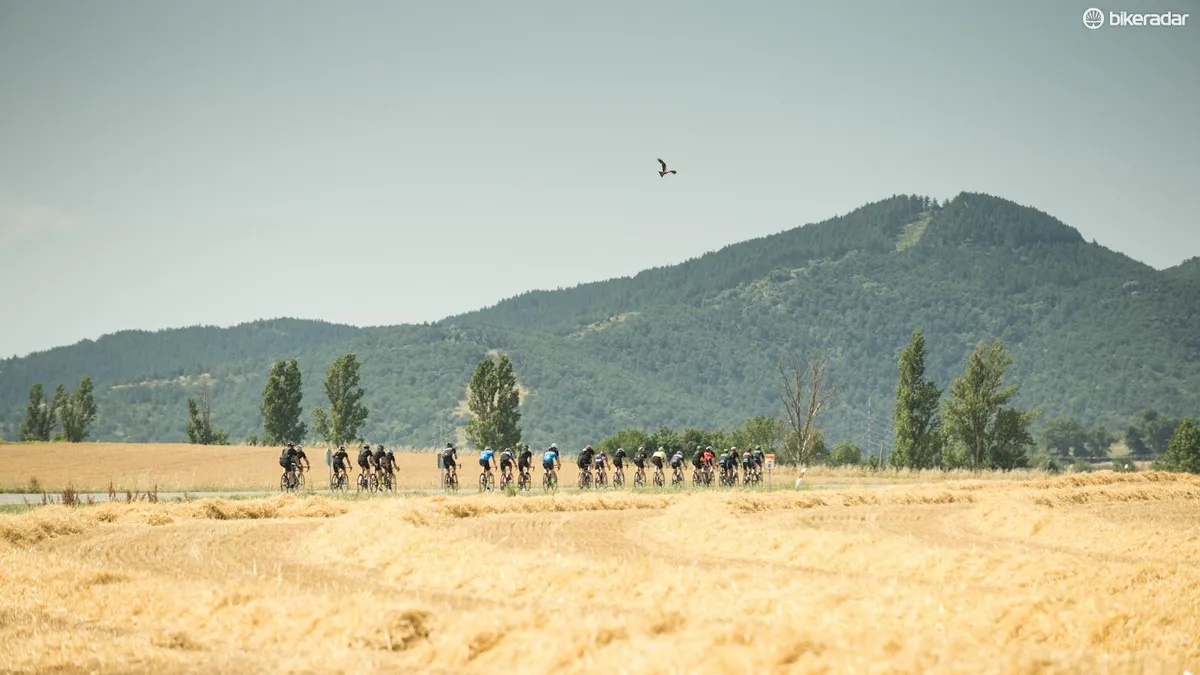
Before we talk about the ride, a caveat: I’ve only covered 60km on the bike and as ever, my impressions of the ride quality and handling are subject to a number of variables, not least of which was that it was blood-boilingly hot in Spain. My Garmin recorded an average temperature of 37 degrees Celsius, which to a pasty Brit felt like the surface of the sun itself, and which wasn’t conducive to mental clarity.
From the off, the Ultimate’s most distinctive trait was smoothness. Granted, the roads around Pamplona were better than those I encounter on my everyday riding, but the bike has a floaty quality that’s immediately noticeable, and you can really feel the give built in to the seatpost and seat clamp arrangement.

The softness of the rear end is such that your brain anticipates huge flex when you try to put power down, but that wasn’t the case. The Ultimate is definitely not the stiffest bike I’ve ever ridden, but when you get out of the saddle and push, it has a delightful spring to it; it’s lively and willing in a way that echoes some of the best race bikes out there.
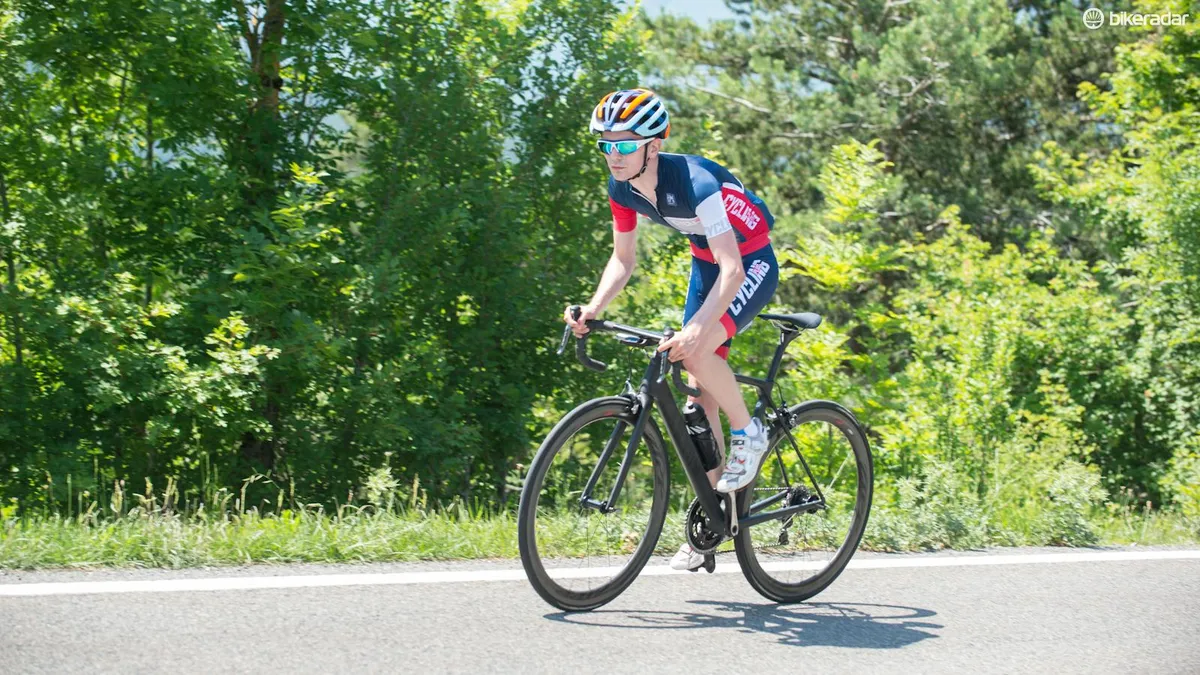
With only one real descent on our test ride I haven’t got the true measure of the Ultimate’s downhill abilities yet. The default stem length of 90mm on a small is too short for me, and as a result I was feeling slightly scrunched up.
This, plus the fact that the brakes were set up backwards (Euro-style), meant I wasn’t completely comfortable exploring the limits. My initial impression was that the front-end wasn’t as razor-sharp as it could be, needing some persuasion to commit to a line, but until I’ve spent some more time on a bike set up to my needs, I’m not going to give a final verdict.
Canyon has produced a thoroughly modern racer with a host of interesting and innovative features. There’s no question that the Ultimate CF SLX is a very good bike, but it’s too early to say if it’s a great one.
Spec as tested
- Frame: Ultimate CF SLX
- Fork: Ultimate CF SLX
- Stem/handlebar: Canyon H36 carbon one-piece
- Brakes: Shimano Dura Ace 9000
- Front derailleur: Shimano Dura Ace 9000 Di2
- Rear derailleur: Shimano Dura Ace 9000 Di2
- Shift levers: Shimano Dura Ace 9000 Di2
- Cassette: Shimano Dura Ace 9000 11-28
- Chain: Shimano Dura Ace 9000
- Crankset: Shimano Dura Ace 9000 52/36
- Wheels: Zipp 303 Firecrest carbon clincher
- Tyres: Continental GP4000S II 23mm front/25mm rear
- Saddle: Fizik Antares
- Seatpost: Canyon VCLS
- Bottle cage: Canyon
- Weight as tested: 6.8kg including pedals
Pricing and availability
Pricing is to be confirmed, probably at Eurobike, but based on the previous model we expect the version we tested to be in the region of £6000. A range of builds will be offered, including at least one with women's-specific contact points. Next year a cheaper SL version will be released, and Canyon hinted strongly at a disc version too.
